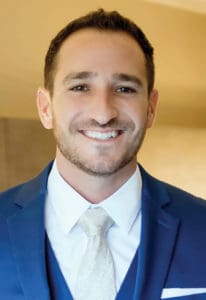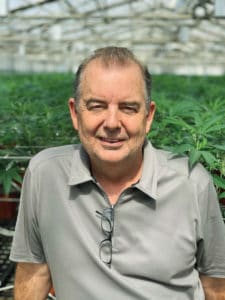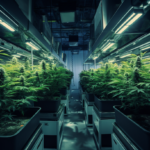From plant-based learning and vertical integration to deploying technology and reducing costs, four experts share their tips.

Are there advantages to a vertically integrated operation? Being vertically integrated certainly offers a competitive advantage—the biggest being total control of the supply chain. When you have 17,000 square feet of grow rooms that provide hundreds of pounds of premium cannabis per week, you have options as to how the product will be used. Typically, most of the flower will get packaged into eighths, quarters, ounces, and pounds for wholesale. You can also fresh-freeze forty pounds to sixty pounds per week for concentrates, meaning you don’t have to rely on a trim supplier for concentrates or a flower grower to stock your dispensary.
Another advantage of being vertically integrated relates to relying on others for perishable products. Because you will be using your own flower and trim for extracts, you’ll know exactly what nutrients and compounds have been used in the growth of the plants.
Lastly, vertical integration allows easier forecasting because you’ll have a specific set of metrics to calculate how much flower and trim you can produce in a week. Furthermore, the dispensary and wholesale teams will be able to see which strains and what quantities will be available for their respective departments. Having all this information ahead of time ensures products are moved to their final destinations as quickly as possible with the least amount of time for degradation. —Mike Lempert, director of logistics, Seed & Smith

Do boutique farms share characteristics not found at larger grows?
Small cannabis farmers have resilience and adaptability built into their DNA—just like this plant. I’m humbled every day by the strength and resilience of this plant. It’s taught me to be present, connect, stay open, and accept the natural elements as guiding forces. Try not to get bogged down by the mechanics like regulations, operations, logistics, administrative hurdles… Just grind through it and get the real work done. Small farmers need to understand the connection and purpose of putting intentional energy into their plants. The outcome will be clear to consumers.
This is just the beginning of a new era where patients and consumers finally have access to information about cannabis and the farmers who cultivate it. A consciousness shift is occurring that will favor small-batch, sun cultivators. Small farmers in the Emerald Triangle and other heritage cultivation regions are finding support in local and greater communities. Regenerative certifications like DEM Pure and Sun and Earth assure patients and consumers their flower and flower products were cultivated with social responsibility and the best practices to promote the health of the planet and the plants.—Tina Gordon, founder and owner, Moon Made Farms

How can growers reduce costs without lowering product quality?
First, preventive plant care from the start will help foster plants’ overall health. Preventive spraying, [eco-conscious] bug use, even how you prune your plants at the beginning will determine how much labor you spend on trimming, spraying, monitoring, feeding, etc. How many times you have to spray for bug eradication or how much to feed a plant is important to evaluate. Too little food and you have less yields; too much and your cost of fertilizer is higher than it has to be. Heavy feeding can attract heavier-than-normal bug pressure, like aphids, causing the need to spray more often or add more predator bugs.
Secondly, automation equipment can save a lot of labor in all areas of cultivation, and many of these ideas come out of Big Agriculture vegetable processing facilities. Machines like conveyor belts, electric carts, and self-dumping trailers are key to moving plants or products throughout the farm, from the potting room to the vegetation area to the flowering houses. This alone can reduce manual labor up to 50 percent, especially in labor-heavy areas like drying and processing.
Lastly, energy savings are key to cutting costs. One way to conserve is to work directly with your energy company to determine the best rate for your grow. Another is maintaining stable temperatures day and night. Excessive temperatures at night will affect the bottom line. Ask yourself what type of lights you buy. Using high-pressure sodium (HPS) or LEDs can reduce your energy bill by 30 percent or more. LEDs have a higher upfront cost, but in some cases you can get a rebate for 20 percent to 30 percent of the cost of the fixture.—Doug Brothers, VP of Farm Operations, Harborside

Can cloud-based technology help cultivators improve productivity and yields?
A solid cloud-based system can dramatically improve trackability by having your data integrated into a single system, communication by getting everyone on the same page, reporting by predicting and confirming expected yields while understanding the math behind each harvest, and profitability by increasing yields per strain and decreasing costs overall.
A cloud-based cannabis cultivation app can replace whiteboards, spreadsheets, and sticky notes. You can also transform your [standard operating procedures] into a phone-accessible project manager that is checked after each task is performed. This keeps track of how long each task takes, which in turn lets you know what the cost of each task is down to the individual plant level. Plant concerns or recommendations can be tracked in a system that everyone, even offsite grow managers, has access to. Pictures and videos can be submitted by team members showing issues like mites and fungus as well as just-in-time video training showing each team member how to perform the assigned task. —Brett Strauss, founder and president FolioGrow










